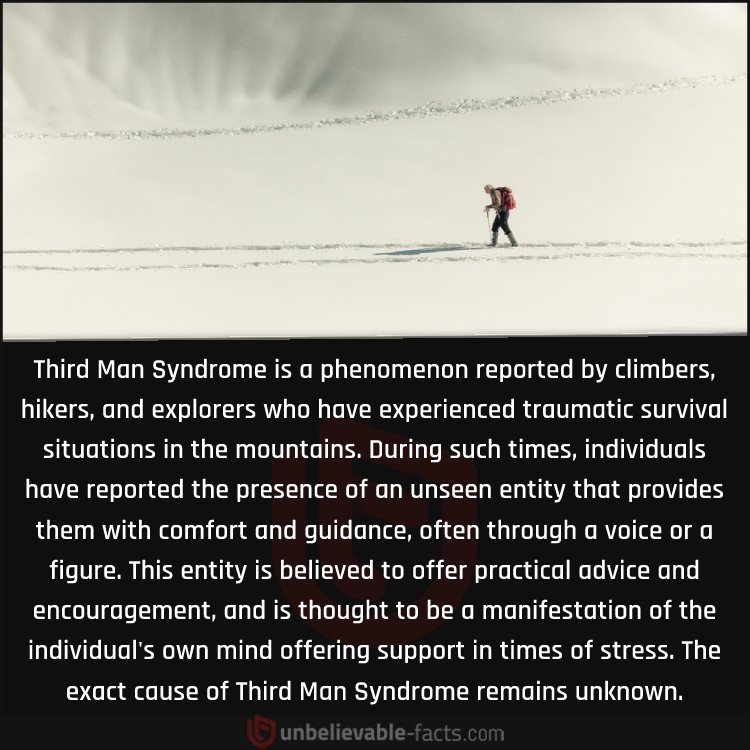If you’ve been around intense BDSM scenes long enough, you’ve probably heard someone describe “subspace,” “floating,” or “being held by something larger.” If you’ve worked with edge-pushing players, you may have seen people emerge from a scene with the kind of quiet awe usually reserved for survival stories.
Interestingly, psychology and neuroscience give us a fascinating parallel to this: Third Man Syndrome, a phenomenon reported by people in extreme life-or-death situations, where they sense an unseen presence guiding them through.
I want to take a closer look at what’s actually happening here, and why these experiences, though so different on the surface, share deep roots in the brain’s wiring.
The Chemistry Behind Intensity
In a BDSM scene, especially when it pushes physical or emotional edges, the body kicks into a particular neurochemical gear.
We get:• Endorphins: the body’s natural painkillers, creating a sense of euphoria and numbing pain.• Dopamine: sharpening focus and delivering that rewarding “high” we often associate with novelty or challenge.• Norepinephrine: heightening alertness, sometimes warping time and perception.• Oxytocin: deepening trust and connection, especially in partnered play.• Cortisol and adrenaline: activating short-term stress responses that can ramp up energy and sharpen awareness.
Now, compare this to someone surviving a shipwreck, a mountaineer stranded in a storm, or a solo explorer on the edge of collapse. Their body pulls from the same neurochemical toolkit, and sometimes, under that intense pressure, their brain generates what’s known as Third Man Syndrome – a vivid sense that they are not alone, that a companion is helping them endure.
States of Mind: Dissociation, Flow, Presence
BDSM players, especially bottoms, often describe slipping into dissociative states, a stepping back from ordinary awareness, sometimes accompanied by floating sensations, time distortion, or a felt loss of the usual boundaries between body and environment.
They may experience flow states: complete absorption in the moment, with no room for self-judgement or external noise.
Some report something even more curious, a felt presence that’s hard to explain. For some, it’s their partner, for others, it feels larger, more abstract.
Third Man Syndrome produces a similar experience. Survival stories are full of accounts of climbers, sailors, and disaster survivors who report a clear, guiding presence, sometimes described as a voice, sometimes as a companion, sometimes as a profound, wordless reassurance.
The Dividing Line: Context and Meaning
Here’s where things diverge.
In BDSM, these altered states happen inside consent frameworks, with negotiated roles, limits, and planned aftercare. The pain, the surrender, the intensity, all of it is held inside a web of trust, eroticism, play, and exploration.
With Third Man Syndrome, none of this is invited. It emerges in moments of survival. People often interpret it spiritually, mystically, or as a sign of something larger than themselves.
Recovery and Integration
After a BDSM scene, aftercare helps participants come back to baseline. That might mean blankets, hydration, quiet time, or simply being held, along with check-ins that help integrate the experience emotionally.
For those who’ve survived extreme ordeals, the integration is often slower and lonelier. The “third man” may remain a private touchstone, something they carry for years without fully understanding or explaining it to others.
What This Tells Us About Being Human
Both BDSM and Third Man Syndrome remind us that the human brain is wired with enormous flexibility. Under pressure, whether joyful, erotic, painful, or life-threatening, it can shift into states that transcend ordinary experience.
The key difference is the frame: one is rooted in play, care, and chosen exploration, the other, in survival. But the underlying systems speak to something profoundly human, our capacity to adapt, connect, endure, and sometimes, to touch the mysterious.



